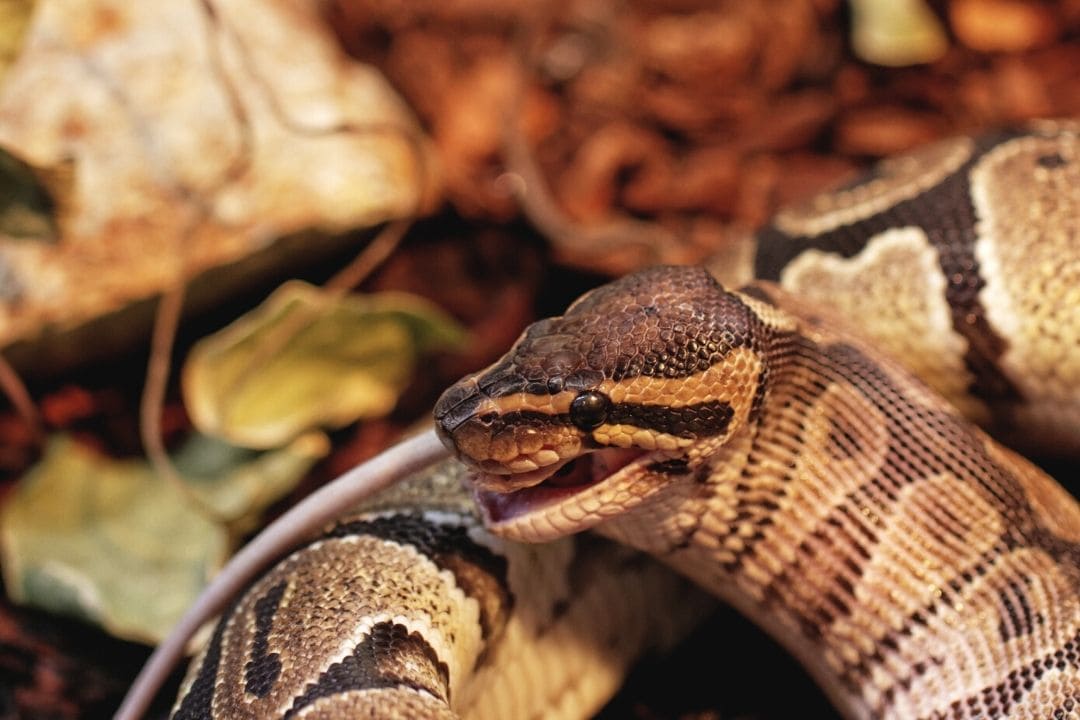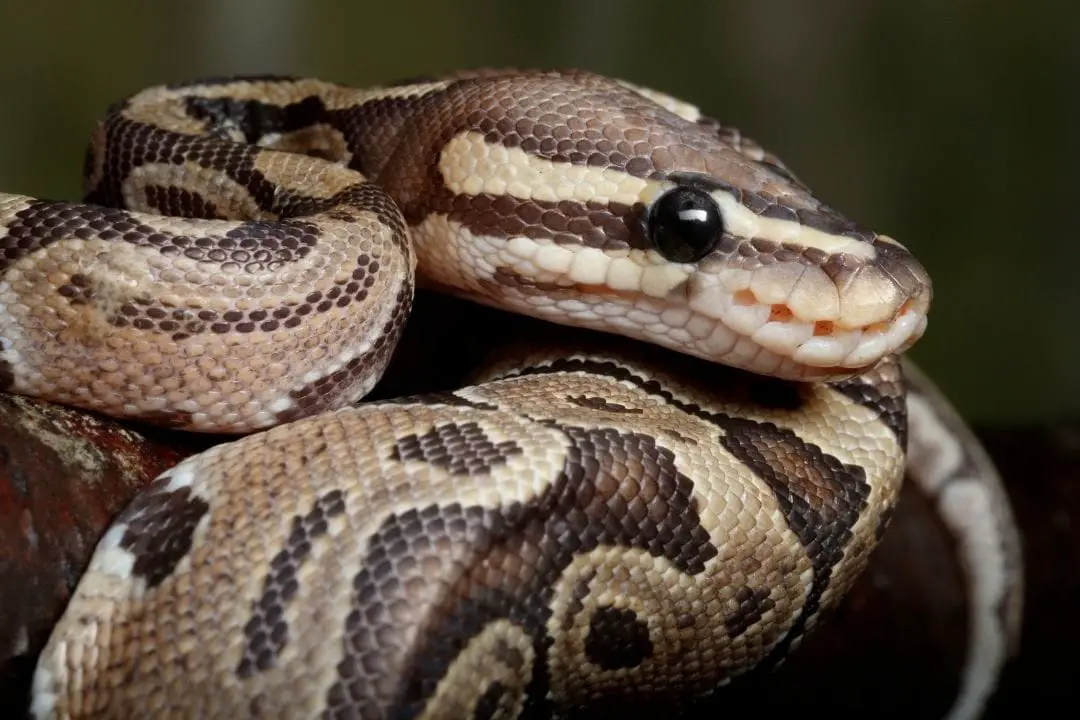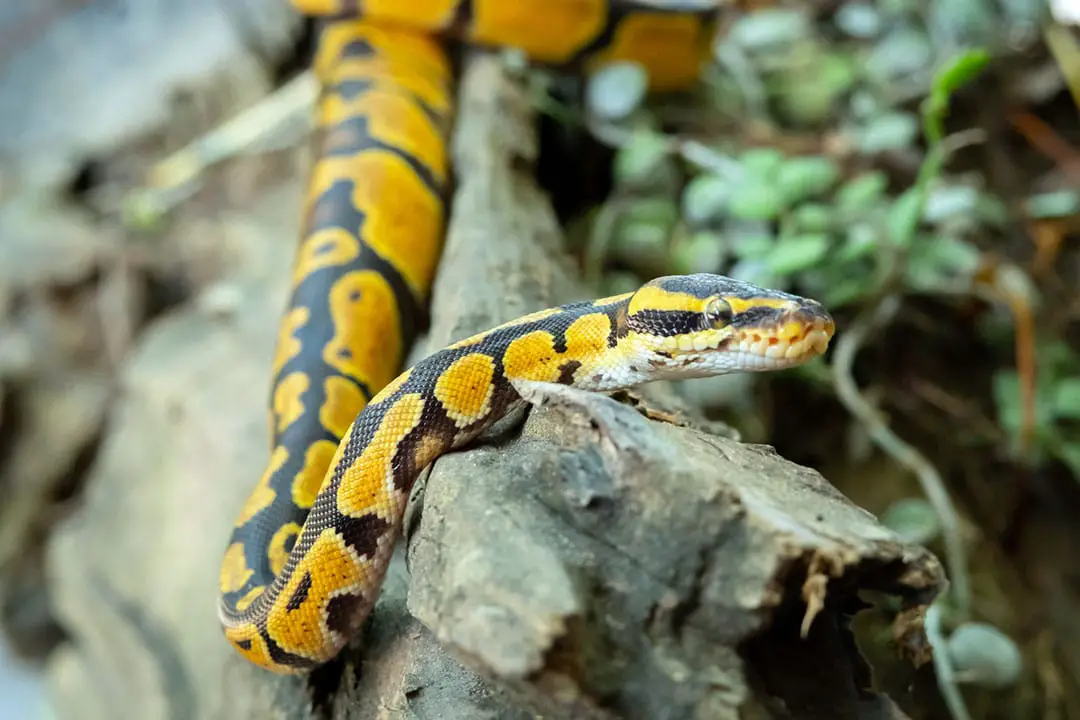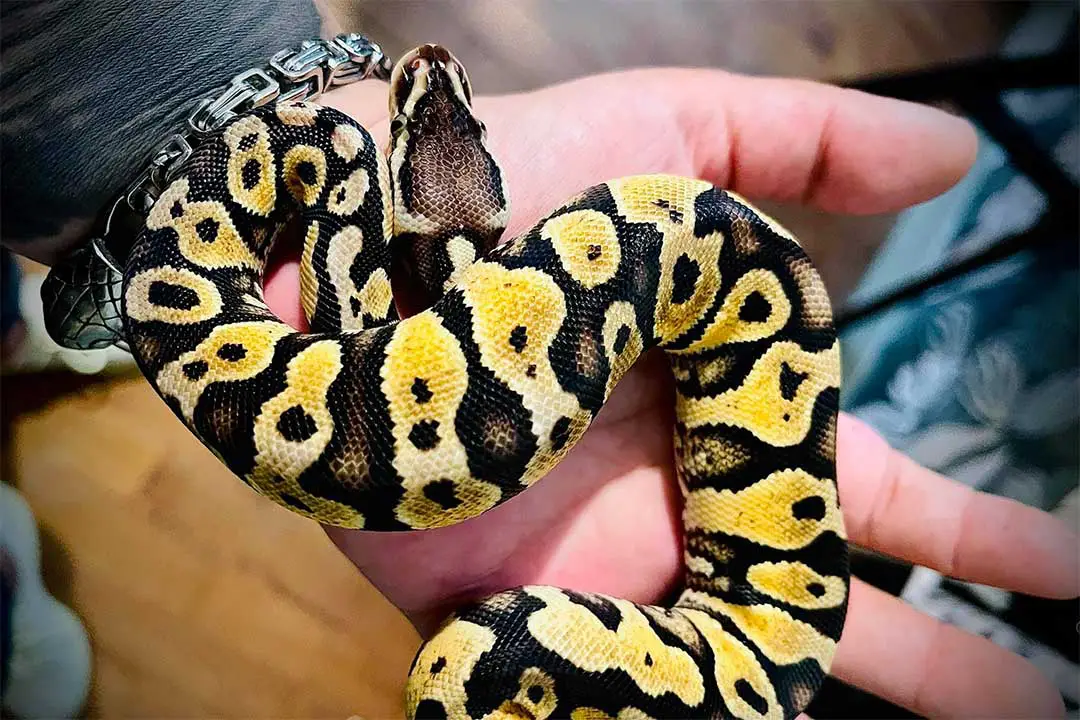Bally pythons (Python regius) are very popular pet snakes (see my ball python care sheet here). You may be wondering what ball pythons eat in the wild and in captivity.
So, what do ball pythons eat?
Ball pythons eat rodents. In the wild, they eat small mammals and birds. Captive pet snakes are typically fed mice or rats since they are easy to find.
In the Wild
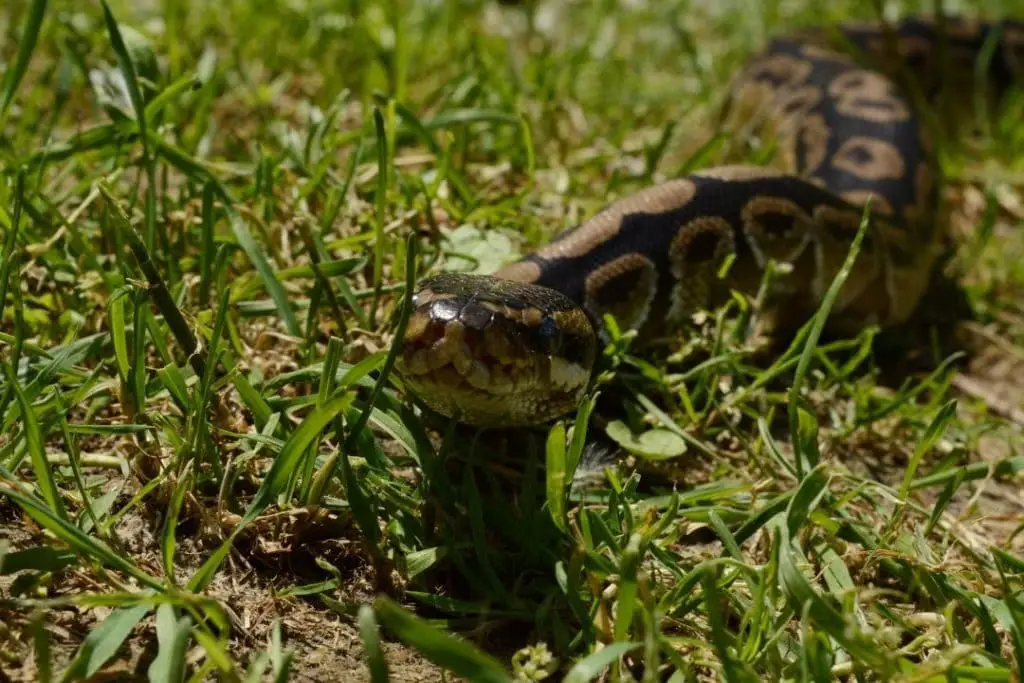
Wild ball pythons eat vertebrates throughout their lives. Smaller snakes such as juveniles and males are more arboreal than females.
According to this study of diet in wild snakes, males target primarily birds while females eat more rodents. This is because males spend more time in trees than females.
However, both sexes will eat any rodent or bird they have access to. Younger and smaller snakes frequently target nestlings and immature birds.
Larger snakes switch over to eating mammals almost exclusively.
There is a change in behavior once females reach larger sizes since it has been noted that there is a difference in parasite loads between the sexes.
Females typically only pick up terrestrial ticks while males will also pick up ticks from low branches.
In Captivity
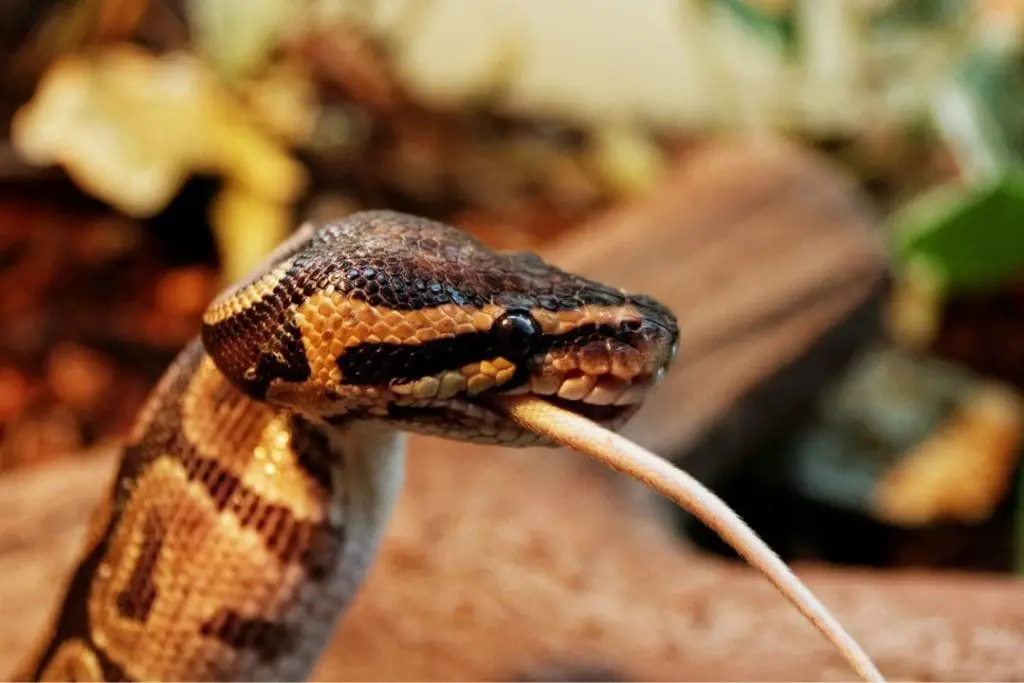
Ball pythons are more than happy on a rodent diet in captivity. Captive-bred animals are typically less picky than wild-caught animals.
However, ball pythons are noted for feeding strikes and pickiness. Females frequently go on feeding strikes once they hit a certain weight.
The breeding season can also put snakes off their food.
They can also be picky on their prey.
Ball pythons have been noted as going on feeding strikes if you try to switch them from mice to rats as the snake grows. Some snakes may also refuse a meal if the fur color is different.
Other snakes are picky enough to only want special prey like gerbils, soft-furred rats, or even quail chicks. They may also put up a fuss when you switch over to pre-killed prey.
Many owners start and keep their ball pythons on live prey. This is a good idea with truly picky snakes but comes with a number of downsides.
For one, you have to either buy a live prey item before a meal or keep rodents for meals. You cannot easily stock up on prey. Live prey can also transmit parasites or bite your snake.

While this isn’t an issue when the snake is eating newborn mice or rats, once their prey is big enough to fight back it can be an issue. Ball pythons are notorious for refusing meals for no reason.
Your snake may just decide it wants to skip one meal and will eat the next time. When you are feeding live, this can be a problem.
For one, you have to do something with the rodent your snake refused to touch. You have to house the prey for a minimum of a week until you can offer a meal again.
For a young snake eating pinkies or fuzzies, this means the prey may outgrow them even if you can keep it alive. You also need to worry about injuries.
If your snake isn’t hungry or misses the strike, the rodent will likely fight back. Mice and rats can be vicious and kill a snake.
Since ball pythons will ball up when frightened, this can leave your snake vulnerable. You have to watch any feeding until the prey is dead since there is no way for either animal to escape.
If you can switch your snake over, it is a good idea since you can avoid any chance of injury. You should try to switch your ball python if you can, but some snakes will just refuse any other options.
Switching a young snake can be easier, but watch your snake to make sure it doesn’t skip too many meals.
Buying Frozen mice for your Ball pythons

Frozen or pre-killed rodents are another good option.
You can kill prey right before offering it if you have problems tricking the snake into taking thawed rodents. You will have to learn how to do this humanely though, and some people might not want to kill the rodent themselves.
Frozen and thawed rats and mice are killed humanely. They cannot hurt your snake and the freezing process kills off most of the parasites that live animals can transmit to your snake. You just need to thaw the rodent in the fridge the day before you want to feed your snake.
Take it out about 10 minutes before mealtime and place the prey in a BPA-free bag. Put the prey in water that is about 100 degrees until it reaches that temperature all the way through the prey.
Then you can offer it to your snake. Some snakes will only take the prey if you move it around to make it seem alive.
Other snakes prefer privacy so placing the prey in a paper bag or box and allowing the snake to eat it in private works best. You will learn what your snake likes.
If you have a stubborn snake that doesn’t want to switch prey types, you can use a scenting material to make the prey smell more appealing.
Gerbil bedding can work if you can get it, or you can use the scenting liquid that smells like African soft-furred rats, which many ball pythons heavily prefer.
This can trick your snake into trying new prey or making a snake take meals again.
Scenting with liquids or bedding works even with live prey, unlike the other options for scenting which is to expose the prey’s brain. This should only be done with pre-killed prey or thawed prey since it is cruel to do this to a live animal.
Micedirect Frozen Mice
- Direct from the producer
- Packed in dry ice, delivered by FedEx
- These feeder Mice for snakes are put to sleep with Co2 so they never suffer
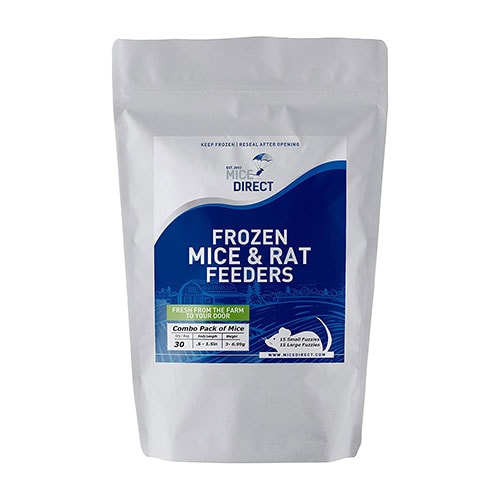
If you want to buy live prey, you need to find a local breeder since live rodents cannot be shipped in the mail. Frozen prey can be bought online from a number of sources.
I recommend Micedirect, but RodentPro, Layne Labs, and Big Cheese Rodents all sell a number of frozen prey options for ball pythons and other species.
Snakes with better feeding responses like corn snakes, kingsnakes, and hognoses will frequently take them.
If you own one of these species it may be worth ordering for your other snakes and seeing if your ball python will accept one.
The company also sells scenting liquids, which are great for reluctant ball pythons.
Conclusion
Ball pythons eat small mammals like rodents in the wild and in captivity. Wild snakes typically eat young birds until they are large enough to hunt on the ground.
You will likely end up feeding your ball python rats once it is fully grown. Some snakes will be picky and may only take very specific prey. If you have any questions or comments, please leave them below.
